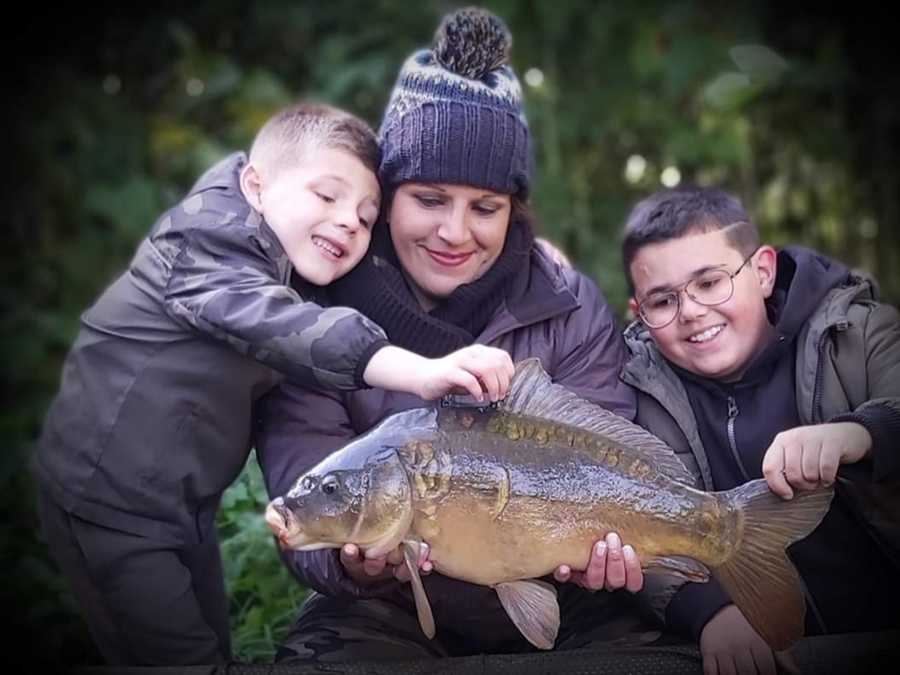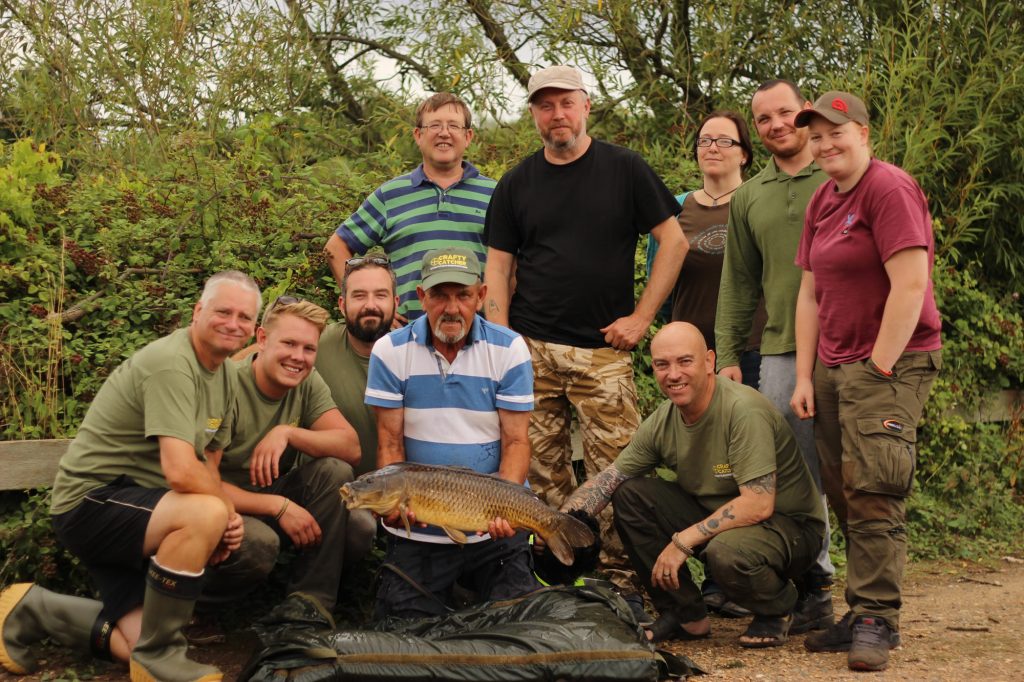
Beyond the Breakers
Response to ‘Fishing News’ article: ‘More bluefin going for the crabs’
Recreational sea fishing representatives are disappointed to see the editorial published in Fishing News (27th February 2025) ‘More bluefin going for the crabs’. It is an unwarranted and unsubstantiated attack on the legal catch and release bluefin tuna fishery introduced by Defra in 2024 as part the economic growth opportunities available now the UK is able to control its own waters.
With bluefin tuna having returned to our waters in huge numbers, both the recreational and commercial fishing sectors could and should be making common cause to ensure the UK, and coastal communities, are able to benefit from their presence.
Sadly, Fishing News seem to want to set the two communities against each other by citing ill-informed and unsubstantiated claims made by some in the commercial fishing sector who prefer to seek to undermine and question the legitimate and legal rights of a recreational bluefin fishery to operate in UK waters.
The Angling Trust, along with the UK Bluefin Tuna Association and the Sportfishing Club of the British Isles, feel obliged to respond to the numerous inaccurate and unsubstantiated hearsay comments reported as ‘fact’ in the article. We have set out below detailed responses to each of the claims made by Fishing News. We will continue to work with Defra and the Marine Management Organisation (MMO) to improve practices within the fishery, based on sound evidence and data, and to call for better enforcement of both the recreational and commercial by the MMO.
Rebutting the claims made by Fishing News
1. Trawling up of dead tuna. ‘It is highly likely that this is linked to the expansion of the charter fishing industry in 2024’.
No evidence is produced regarding the extent of this, how many tuna were involved or why the fisherman in question assumes that these are from catch-and-release recreational fishery (CRRF). It is equally possible that those fish were lost or released by the rod-and-line commercial fishery or taken and discarded as bycatch by commercial fishing vessels (either not permitted to sell ‘one fish per trip’ or having exceeded that allowance). This claim is not supported by any evidence and nor is it quantified and is therefore both speculative and unsubstantiated in terms of apportioning the source of those dead fish.
2. ‘…being hooked up on light lines and played for hours… releasing the fish as quickly as possible in order to get the next customer hooked up as well’.
If Fishing News or the ‘commercial tuna fisherman’ who ‘didn’t want to be named’ have any evidence of these claims, that evidence should be provided to Defra/MMO. Such evidence would then be considered in the review of the CRRF and would potentially contribute to developing fishing protocols and advice as part of the ongoing development process recreational fishers have been engaged in with Defra/MMO/CEFAS/NE since 2021. As it stands these allegations are unsubstantiated hearsay.
3. The article cites guidance by the ThunnusUK team regarding bluefin diving post release and recommending fish are not released in water less than 50m deep. The article goes on to claim that ‘much of the UK charter vessel activity has been taking place in very much shallower water, making the recovery of released animals more unlikely’.
Fishing News cannot possibly know the depths at which the majority of recreational bluefin captures in the CRRF have taken place – such data have not been published. However, we have little reason to believe that the ‘fishing grounds’ will be substantially different from those utilised in both the ThunnusUK and CHART programmes. PSAT-based post-release behaviour and mortality studies (PRM) in those programmes have not indicated a problem with bluefin recovery in those locales. PRM in several hundred tagged fish has been in the low single digit percentage. In the case of CHART, all such mortalities occurred in the first year of the programme. Recreational fishing representatives have already discussed the risks from ‘inshore’ fishing, recovery and release, with CEFAS and ThunnusUK scientists and sought actual data to examine the extent of any potential risks. The claims made in the article are exaggerated and unproven.
4. ‘The 2024 UK bycatch quota for bluefin was set at 16t… that would suggest 160 dead tuna, the vast majority of which do indeed ‘feed the crabs’ rather than feed human beings.’
This illustrates a worrying lack of understanding regarding the allocation and purpose of quota across the various sectors. The 16t is NOT ‘bycatch quota’, it is an amount of quota set aside (as required by ICCAT) to account for potential incidental mortality in the catch-and-release recreational fishery (CRRF). The amount is determined by Defra and was set at a conservative level to provide a cushion whilst the actual incidental mortality rate (required to be recorded, reported to ICCAT and set against the UK’s annual quota) in the new fishery was being determined in the first few years of operation. The amount of quota needed appears to be markedly lower, and indeed Defra has reduced the allocation to 13t in 2025 and has indicated it will continue to review that in light of both the incidental mortality rates exhibited in the fishery and the expansion in the size of the fishery.
5. ‘the most extensive research on bluefin tuna recovery, undertaken in Australia, suggests a 3% mortality during hook up or capture, but then a much higher mortality rate of 17% after release, in other words a fifth of all tuna taken in catch and release fisheries are dying’.
The most extensive work, encompassing the largest numbers of bluefin tuna, has in fact been undertaken in the UK and Scandinavia and not Australia. Under the strict reporting obligations of the ThunnusUK programme, the CHART programme and the Scandinavian bluefin research undertaken in Sweden and Denmark, the capture and release of over 4,000 Atlantic bluefin by recreational fishers has been studied. Additionally, several hundred bluefin released in those programmes have been subject to post-release study of behaviour and survivorship via the fitting of electronic ‘pop-off’ tags.
The Australian study cited in the article appears to be ‘Capture-induced physiological stress and post-release survival in recreationally caught Southern Bluefin Tuna’ (Tracey et al, 2016) published by the University of Tasmania and Institute for Marine and Antarctic Studies. This study covered just 59 captures of Southern bluefin tuna off Tasmania and South East Australia. The findings of that study represent an outlier in terms of the results from a wide range of studies and is not comparable in numerous ways to either CHART or the CRRF.
- The Southern bluefin captured were, on average, much smaller than the Atlantic bluefin encountered in the far North East Atlantic.
- The 17% mortality rate included predation by seals of small fish upon release (not a concern for the UK fisher).
- Multi-hook lures contributed to a high degree of damage and mortality in that subset.
- The fish captured in the study were all boarded and then NOT irrigated or subject to any recovery protocols before release.
These factors all contrast with the current CRRFs operated in UK waters.
The UK-based studies of thousands of bluefin have illustrated over several years an incidental mortality rate of circa 1%, and a post-release mortality rate in the low single digits percent. The ‘Scandinavia Bluefin Marathon’ study (SBM) over hundreds of fish and several years reported a combined mortality rate of just over 4%. Note that the SBM was executed exclusively by PRIVATE recreational vessels and anglers.
Assumptions and estimates jointly produced by recreational fishers, Defra and CEFAS did factor in a slightly higher incidental mortality rate for the 2024 CRRF given the widening of participation to new charter skippers and private vessels, and the opening up of permitted techniques. The ongoing review process will assess how the fishery performs through data collected and, potentially, through additional research programmes. The protocols and Code of Conduct (CoC) of the CRRF are constantly reviewed and already for 2025 some changes in the CoC are anticipated based upon feedback from the early data from the CRRF.
It is disappointing to see ‘Fishing News’ and figures in the commercial fishing sector present unsubstantiated, speculative claims and indulge in selective citing of inappropriate research studies to make inflammatory and inaccurate statements. The recreational fishing sector has always sought to set the highest possible standards in any UK recreational bluefin fishery and has a process in place with Defra, the MMO, CEFAS and others to that effect; protocols and codes of conduct are adapted as required to that end. The recreational sector has also been accepting, and in many cases even supportive of, the development of a truly sustainable, high-quality commercial bluefin fishery.
Sadly, this article suggests that some in the commercial fishing sector still do not recognise the legitimate rights of the recreational sector to operate in a scale and construct based upon years of gathered evidence, contributing important socio-economic benefits to coastal communities.
You might also like

SENSAS FUTURE NETWORKS DO THE DOUBLE DOUBLE IN YOUTH…

NATIONAL GLORY FOR RAMMY AT LINDHOLME

Three British record fish claims ratified

Making plans for kids and holiday activities? Fun, safe…

Get Fishing Fund – Funded Project: Fishing Opens New…

Climate change fuelling dangerous river pollution across England and…

NEW BLOG: The best thing about fishing – from…

Ethan gets his Gold Get Fishing Award – young…

Summer of Fishing 2025 is here – get into…

Get Fishing Awards were at Bristol Festival of Nature…

VIDEO: It’s not all about the fishing… Check out…

ENGLAND TAKE GOLD IN HOME NATIONS BOAT CHAMPS

SENSAS FUTURE NETWORKS DO THE DOUBLE DOUBLE IN YOUTH…

NATIONAL GLORY FOR RAMMY AT LINDHOLME

Three British record fish claims ratified

Making plans for kids and holiday activities? Fun, safe…

Get Fishing Fund – Funded Project: Fishing Opens New…

Climate change fuelling dangerous river pollution across England and…

NEW BLOG: The best thing about fishing – from…

Ethan gets his Gold Get Fishing Award – young…

Summer of Fishing 2025 is here – get into…

Get Fishing Awards were at Bristol Festival of Nature…

VIDEO: It’s not all about the fishing… Check out…

ENGLAND TAKE GOLD IN HOME NATIONS BOAT CHAMPS

SENSAS FUTURE NETWORKS DO THE DOUBLE DOUBLE IN YOUTH…

NATIONAL GLORY FOR RAMMY AT LINDHOLME

Three British record fish claims ratified

Making plans for kids and holiday activities? Fun, safe…

Get Fishing Fund – Funded Project: Fishing Opens New…

Climate change fuelling dangerous river pollution across England and…

NEW BLOG: The best thing about fishing – from…

Ethan gets his Gold Get Fishing Award – young…

Summer of Fishing 2025 is here – get into…

Get Fishing Awards were at Bristol Festival of Nature…

VIDEO: It’s not all about the fishing… Check out…









